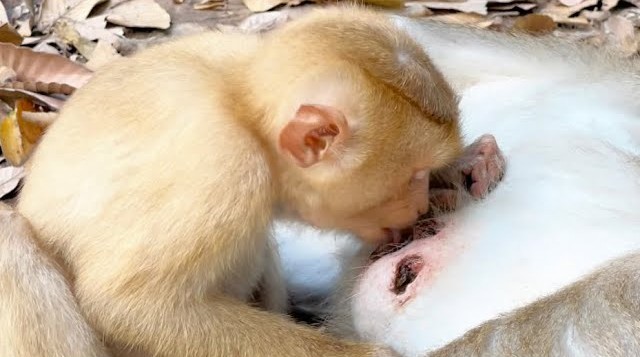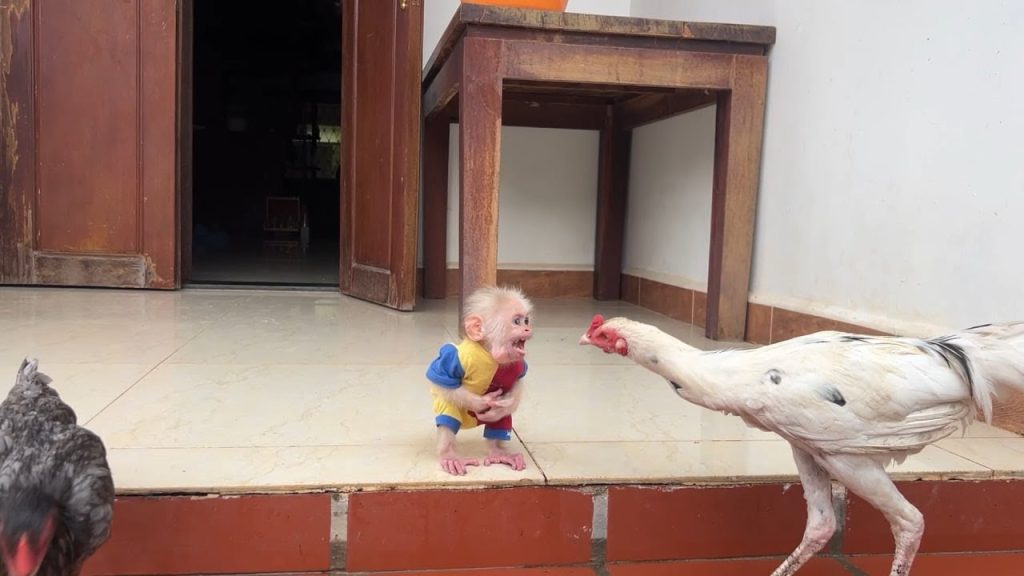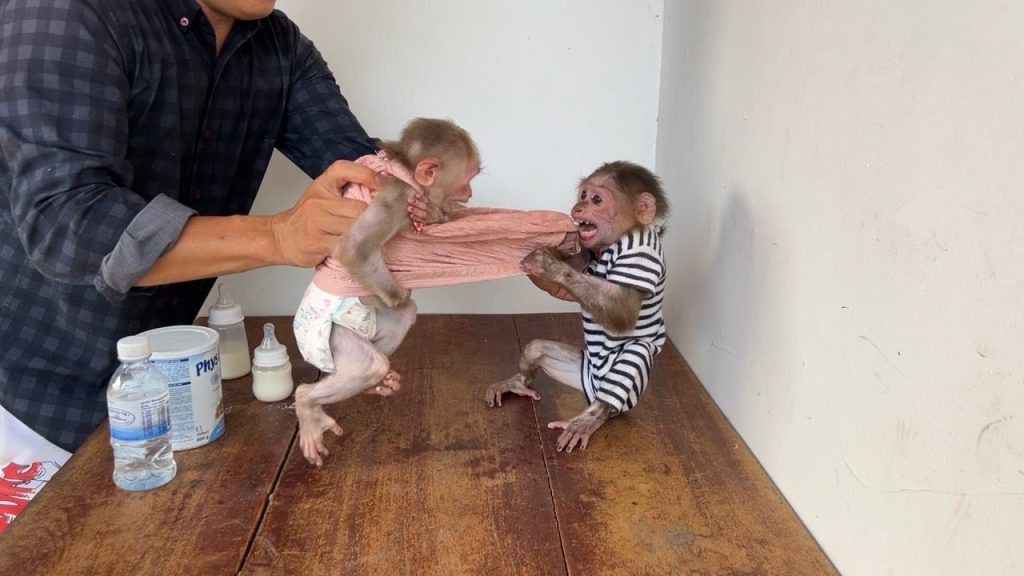
In the animal kingdom, survival is not just about strength but also about care, healing, and the remarkable bonds that form within a group. One of the most fascinating and heartwarming behaviors seen among monkeys is their ability to treat injuries in a natural way. After conflicts, when wounds are inflicted, monkeys often turn to one of nature’s simplest yet most effective forms of care: licking the wound. Such was the case when a monkey, injured during a conflict, received this unexpected but incredible treatment.
The conflict had been intense. In the heat of competition for dominance, food, or territory, one monkey was left with a fresh wound. The bleeding was visible, and the pain caused the injured animal to whimper softly. Ordinarily, one might expect injured monkeys to be left behind, for the wild is often harsh. Yet what followed revealed the deeper intelligence and compassion that lives within their social structure.
Another monkey approached the wounded one, not with aggression but with calmness and empathy. Carefully, it leaned in and began to lick the wound. This was not a random act. Scientists have noted that licking wounds is an instinctive behavior that promotes healing. Saliva has mild antibacterial properties, and the licking motion helps to clean the wound, remove dirt, and soothe the pain. In this simple action, the monkey was providing a natural form of first aid, showing how even in the wild, care can flourish after conflict.
The injured monkey responded with trust. Instead of pulling away, it allowed the treatment, sitting still and accepting the comfort. The bond between the two became clear. It was as though the licking did not just treat the injury but also mended the emotional strain of the conflict. What had been a moment of violence transformed into one of healing and connection.
Such behavior is a reminder of the complexity of monkey societies. While conflicts are inevitable, so too is reconciliation. Grooming, licking, and caring for one another are key ways monkeys strengthen their bonds after tension. By treating wounds, they ensure not only the survival of individuals but also the unity of the group. This balance between aggression and compassion keeps their communities thriving.
For observers, it is a truly amazing sight. Watching a monkey lick and treat another’s wound feels almost human in its tenderness. It reminds us that compassion is not limited to people but is deeply embedded in nature itself. Where there is pain, there can also be healing. Where there is conflict, there can also be forgiveness and care.
The story of the wounded monkey and the amazing treatment it received is more than a tale of survival. It is a powerful lesson about resilience, empathy, and the natural ways living beings care for one another. Even in the wild, amid struggles and hardships, healing can be found in the simplest acts of kindness.


